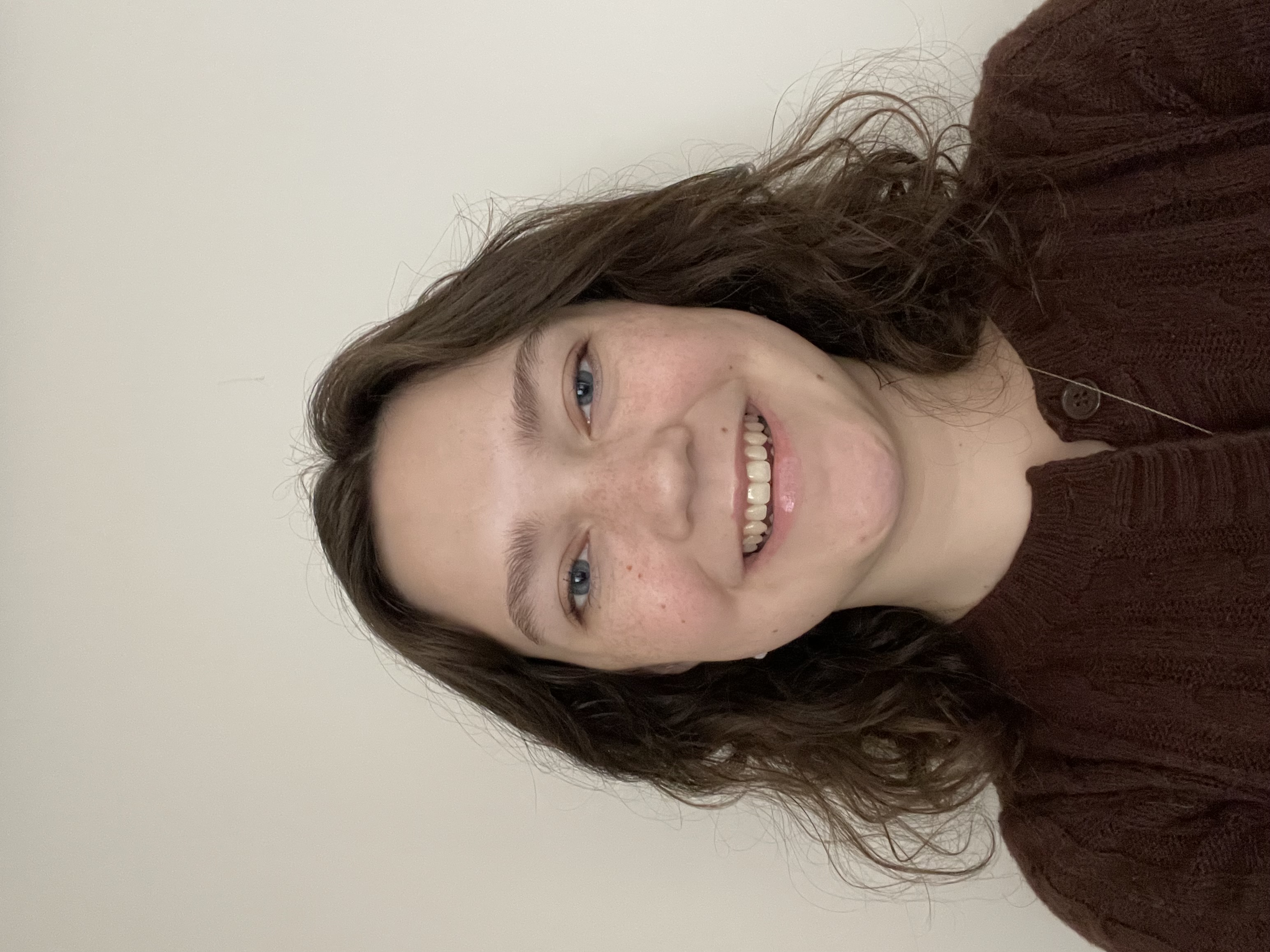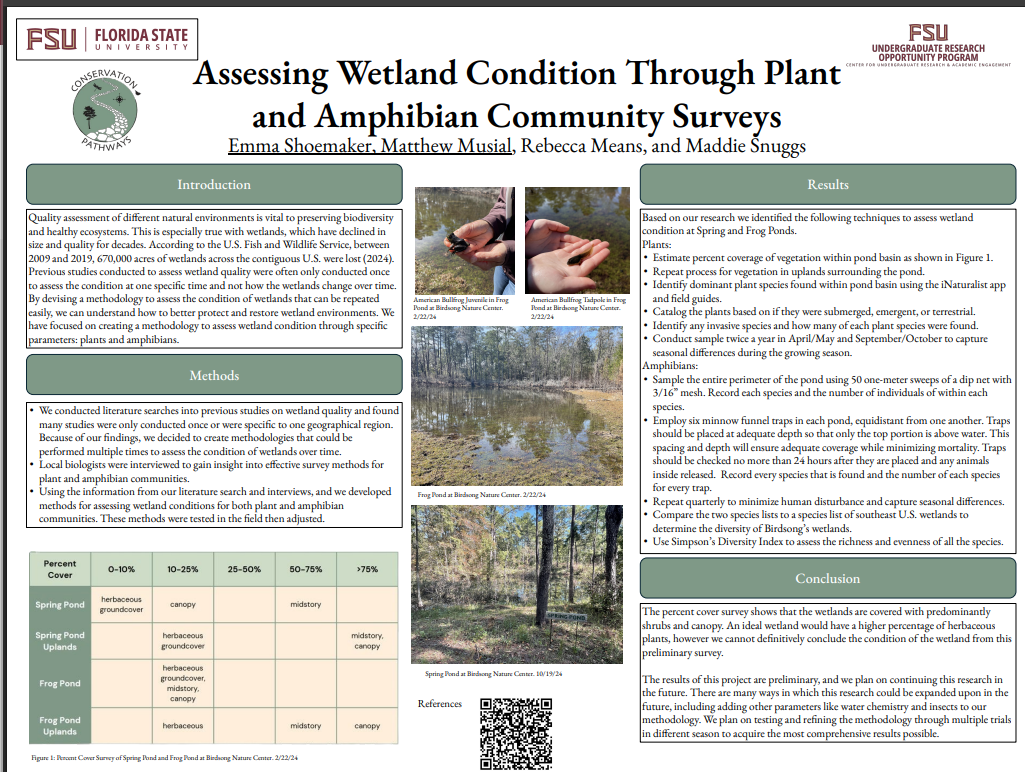Research Symposium
25th annual Undergraduate Research Symposium, April 1, 2025
Emma Shoemaker Poster Session 2: 10:45 am - 11:45 am/ Poster #80

BIO
My name is Emma Shoemaker. I am a sophomore majoring in Biochemistry from Satellite Beach, FL. I am on the executive board of the Yoga Club at FSU and participate as a cellist in the University Sinfonia Orchestra. I am researching with Conservation Pathways, studying how to assess wetland conditions through plant and amphibian communities. In the future, I plan to work in the field. Working with Conservation Pathways has given me many opportunities to enter the field, and I love it.
Assessing Wetland Condition Through Plant and Amphibian Community Surveys
Authors: Emma Shoemaker, Rebecca MeansStudent Major: Biochemistry
Mentor: Rebecca Means
Mentor's Department: N/A Mentor's College: N/A Co-Presenters: Matthew Musial
Abstract
Assessing the quality of different environments is essential to preserving natural habitats, especially wetlands, which have been declining for decades. By creating a methodology for evaluating the quality of a wetland, it is possible to monitor its condition and significantly contribute to the restoration and preservation of the environment. We focused on constructing a method to assess wetland quality through the plant and amphibian communities found at Birdsong Nature Center. We conducted a literature search to gather various approaches to evaluating wetland quality before concentrating on plants and amphibians. We cataloged the plants found in the wetland and classified them based on frequency, proximity to water, and vegetation layer. This classification helps us identify the diversity and species richness of the plants in the wetland and determine whether they are native or invasive. To assess the amphibian species in the wetlands, we employed dip-netting techniques, conducting 50 one-meter sweeps around each pond and setting funnel traps at six equidistant spots along the pond's edge. We placed the traps at an appropriate depth to facilitate easy retrieval while preventing overheating of the amphibians (~ 0.5 m). Using each method, we recorded the species and number of amphibians found in each pond. The results of our research will provide valuable insights into the health of wetlands and provide clear direction for what is needed to maintain or improve the quality of the wetlands.
Keywords: Environmental Science, Wetlands, Conservation


